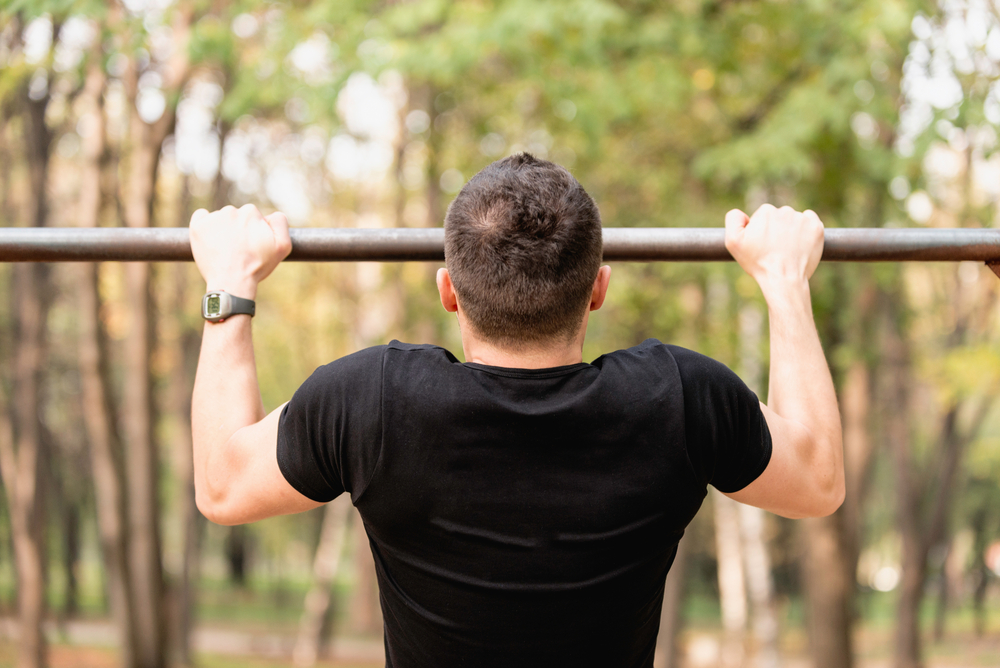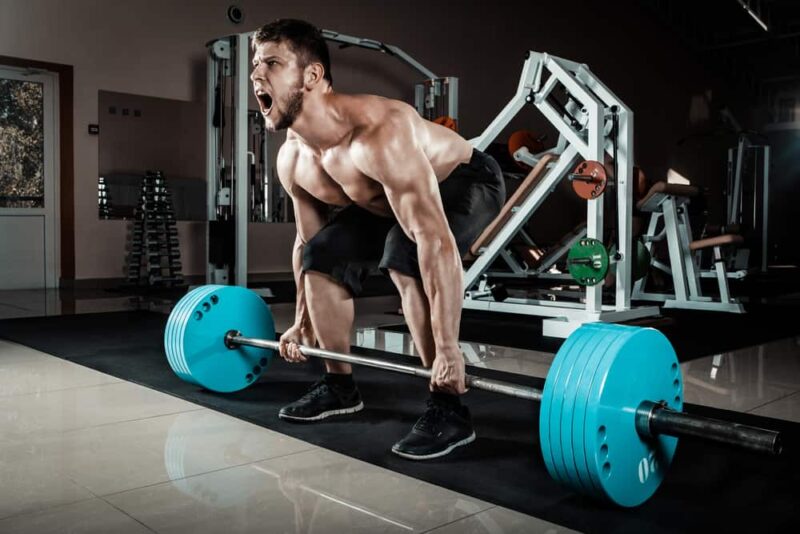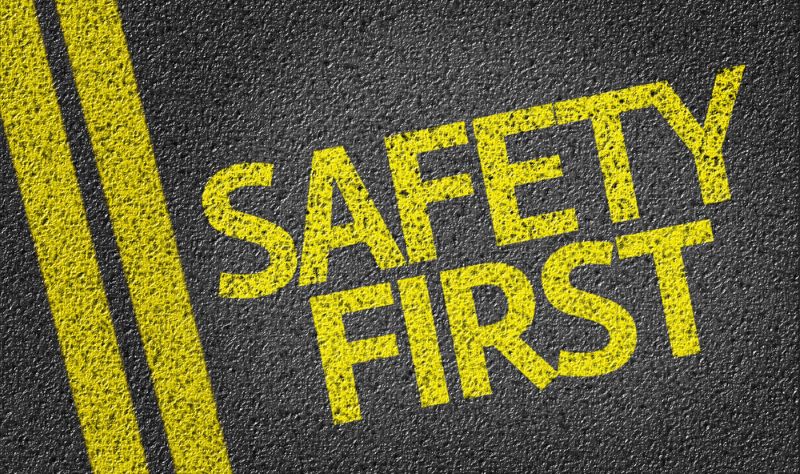If you’re looking for a deadlift vs pull-up comparison guide, then you’ve come to the right place!
In this article, I compare deadlifts and pull-ups to see which one is best for your lower back, upper back, and traps.
By the end of it, you should have a clear understanding as to whether pull-ups or deadlifts are better suited to you and your fitness goals.

What’s The Difference Between Pull-Ups And Deadlifts?
Pull-ups and deadlifts are extremely different exercises.
Although they’re both “pulling” based exercises, they look different, they work different muscles, and they use completely different equipment.
Pull-ups are a bodyweight exercise meaning that your body weight is used as resistance.
You have to use your upper body strength to lift yourself up by holding on to the pull-up bar and pulling yourself up until your chin is level with the bar.
Pull-ups primarily target your upper body including your lats, shoulders, arms, chest, and core.
Deadlifts are a free weights exercise meaning that a weighted barbell is used as resistance.
The exercise requires you to use your lower body and back to lift the weight from the floor up to about hip height.
Deadlifts primarily target your lower body such as your lower back, legs, and core.
Although there are a couple of small similarities between the two exercises (both work your back, both are pulling exercises), there isn’t a huge amount of common ground as there are many differences between the two.
Deadlifts vs Pull-Ups: For Lower Back
Deadlifts are a great lower back-building exercise.
While the exercise brings your legs and core into play, your lower back does a lot of work during the movement.
Pull-ups are pretty much entirely upper-body focused so your lower back won’t have to work very much during the exercise.
When it comes to building your lower back, deadlifts will be much more effective than pull-ups.
Deadlifts vs Pull-Ups: For Upper Back
Pull-ups are all about your upper body with a particular focus on your back.
Some of the big muscles in your upper back include your lats and rhomboids.
(Both of which can be worked extremely hard during pull-ups.)
Deadlifts are much more of a lower-body exercise.
While some upper body (and upper back) muscles play a role in the movement, your lower back will take much more of the focus.
If you want to build your upper back, pull-ups will be a better choice than deadlifts.
Deadlifts vs Pull-Ups: For Traps
Neither pull-ups nor deadlifts alone will be sufficient for building your traps.
While your traps come into play during both, they aren’t one of the main muscles working during either movement.
Pull-ups activate your lower traps more whereas deadlifts will activate mid to upper traps to a greater degree.
In both exercises though, your traps are more of a stabilizing muscle than a working muscle.
Pull-ups and deadlifts are both equally good (or not that good) for building traps.
Difficulty Level
Pull-Ups
Pull-ups involve a fairly challenging movement and they require multiple muscle groups to activate and work together to lift your body weight up on the bar.
The main reason why pull-ups are a hard exercise is that you need a solid foundation of strength and fitness before you’re able to do them effectively.
Lifting your entire body weight with just your upper body isn’t an easy thing to do, so unless you’ve already been training for a while (or you’re naturally fit and strong), pull-ups may be too challenging for you to begin with.
Deadlifts

The movement involved in deadlifts is a relatively straightforward one.
That isn’t to say that deadlifts are easy, they certainly aren’t but the movement isn’t what makes things challenging.
Many muscles need to activate during deadlifts and your technique needs to be spot on to avoid injuring yourself or shifting the focus to other body parts.
The technique is probably the most challenging part of deadlifts as there are several points where you can get things wrong.
Making errors in your deadlift technique can easily put your back under excessive stress resulting in pain, discomfort, and potential injury.
The Verdict
Both pull-ups and deadlifts have a reasonably high difficulty level.
When it comes to the technique involved, a bit more can go wrong in deadlifts.
However, if we take each exercise in its entirety, pull-ups are probably a little harder to add to your workouts as you can’t do too much to adjust the weight being lifted (it’s your body weight).
As you can build up the weight you’re lifting gradually during deadlifts, they tend to be a little bit easier.
Accessibility
Pull-Ups
All you need for pull-ups is a pull-up bar.
Technically, you can do pull-ups on anything that’s higher than head level and can support your weight, although it’s highly recommended that you only do them on equipment that’s been designed for the purpose of pull-ups.
As long as your gym has a pull-up bar, pull-ups have great levels of accessibility.
Deadlifts
Deadlifts only require very basic gym equipment in the form of a barbell and some weight plates.
You’ll need a bit of space to perform them effectively, but this isn’t too much of an issue in most gyms.
In most gym environments, there’ll be a range of barbells and weight plates to choose from so accessibility isn’t an issue for deadlifts.
The Verdict
Pull-ups and deadlifts are both very accessible exercises.
Pull-ups have a very slight advantage over deadlifts though as your body weight is used as resistance.
This means that you’re ready to do pull-ups as soon as you’re at the pull-up bar. No other equipment or weights are needed.
Variability
Pull-Ups
There are several pull-up variations you can add to your workouts to work your upper body in slightly different ways.
From changing your hand position and grip, to adding momentum and extra movements into the exercise, pull-ups are a versatile exercise.
Deadlifts
Deadlifts are also a fairly versatile exercise.
Changes can be made to your stance, your grip, the position of the bar, and quite a few other places.
The Verdict
As deadlifts are a more freely-moving exercise, they tend to have a few more options when it comes to variability.
While pull-ups are a pretty versatile exercise too, deadlifts offer slightly more variations so win this category.
Safety Considerations

Your technique needs to be spot on with compound exercises like pull-ups and deadlifts, that have multiple muscles and joints working at the same time.
There are several places in each of these exercises where things can go wrong and your injury risk is increased, so your technique is extremely important.
Another safety consideration to keep in mind is how quickly you build up each exercise.
For example, pull-ups require good levels of strength, so trying to add ten extra reps to your workout probably isn’t a good idea. A gradual build-up will likely be a better choice.
The same can be said for deadlifts as you’ll need to gradually increase the weight being lifted to help minimize your injury risk.
It’s also a good idea to thoroughly check the equipment you’re about to use before starting your exercise.
If a pull-up bar is broken or weakened, there’s a chance it could fall and cause injury.
If the barbell or weight plates used in deadlifts are damaged, this can cause issues too.
Deadlifts vs Pull-Ups: Which Is Best?
Deadlifts and pull-ups are both highly effective exercises.
Pull-ups could be a better choice if you’re trying to build your upper back and you want a slightly more challenging exercise with better accessibility.
Deadlifts might be better for you if you want to put more focus on your lower back with an exercise that has lots of variability while still only needing basic gym equipment.
As pull-ups and deadlifts are pretty different exercises, you might find that adding both to your workout works very well for you.
That’s all for this article, but can you get tennis elbow from pull-ups? Or do pull-ups increase testosterone?
Thanks for reading!
Sources
I’ve been in the fitness and strength training industry for nearly a decade. In that time, I’ve gained 30 pounds of muscle, written hundreds of articles, and reviewed dozens of fitness supplements. As for my educational background, I’m a currently studying for my Active IQ Level 3 Diploma in Personal Training.

